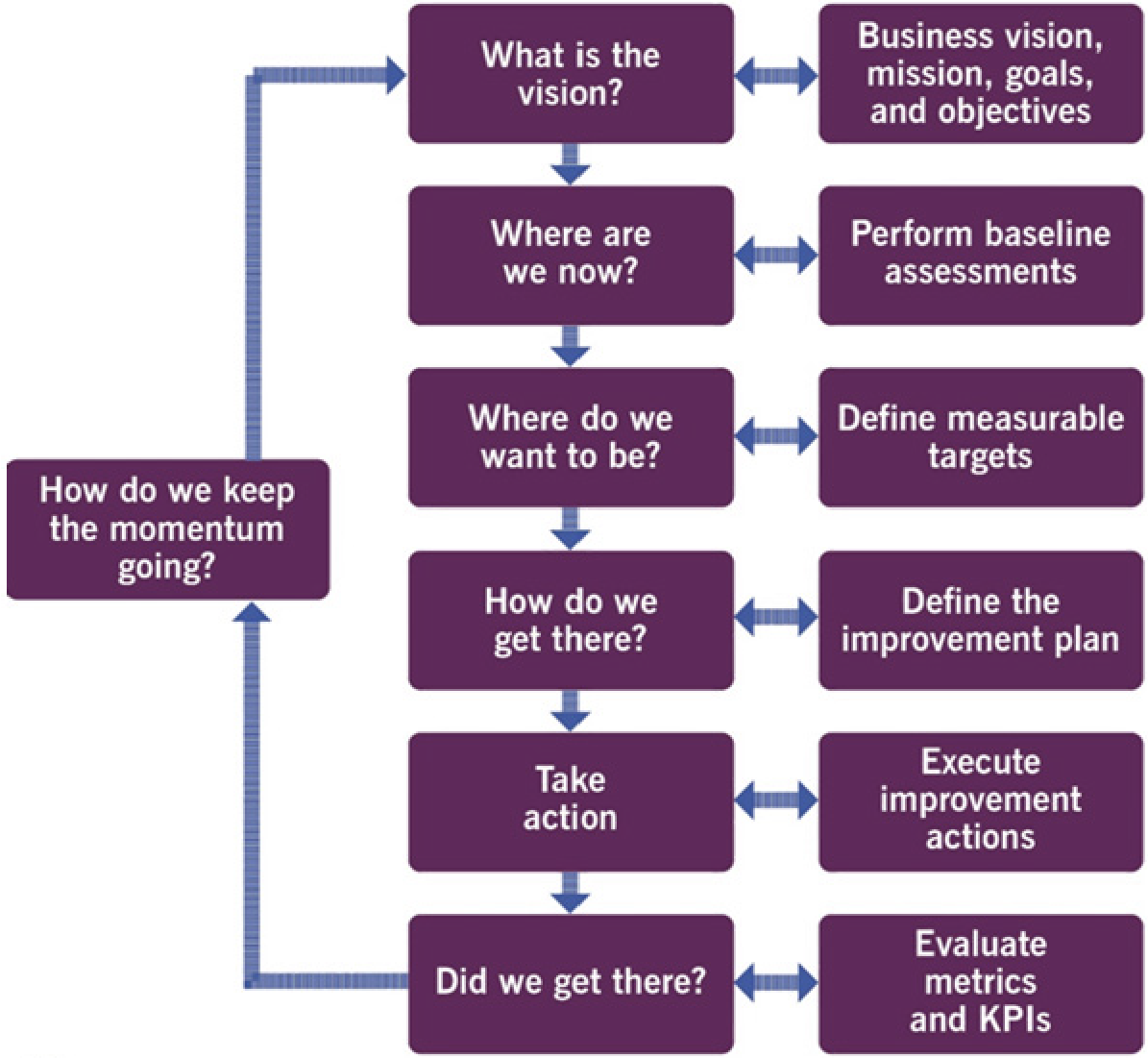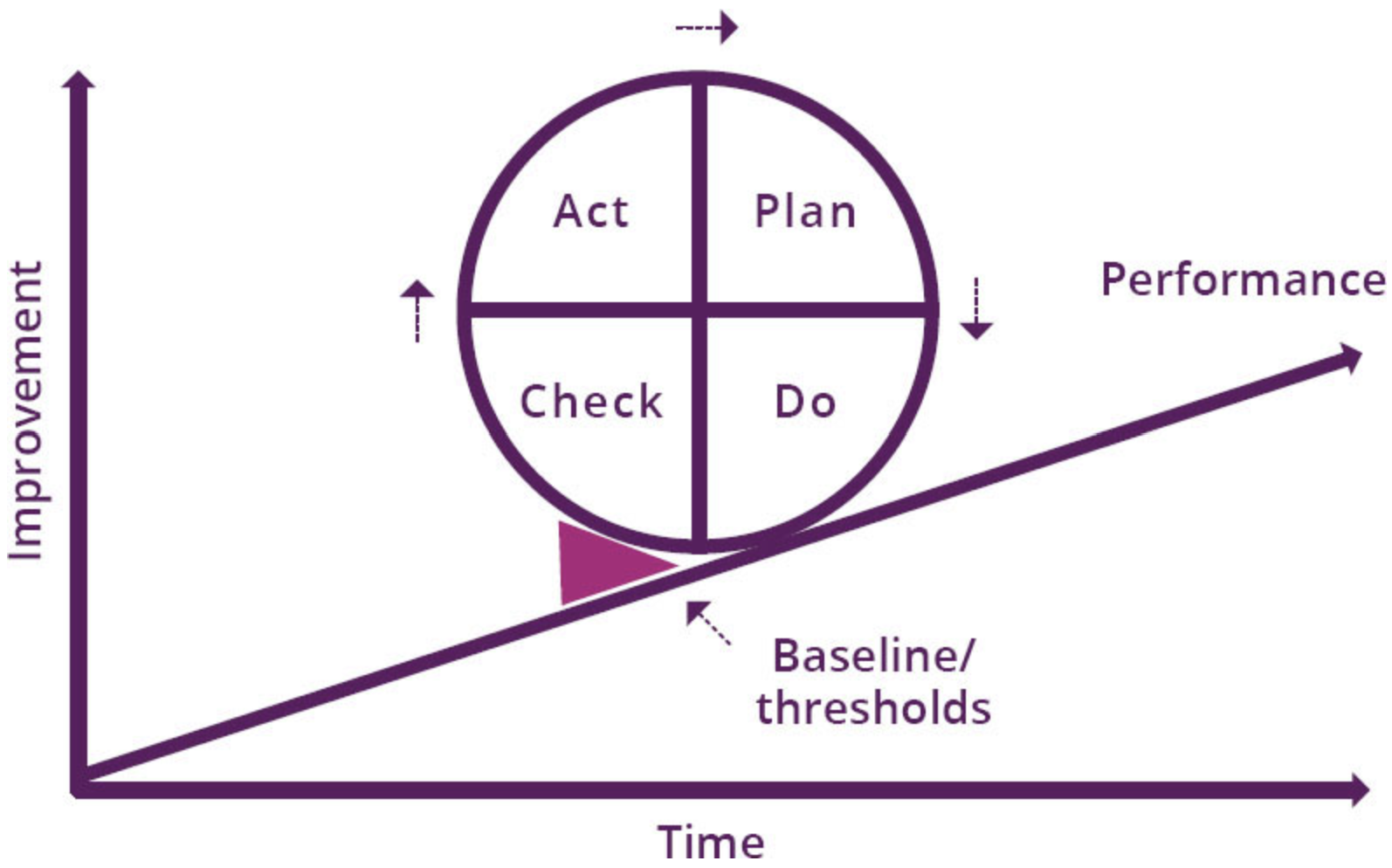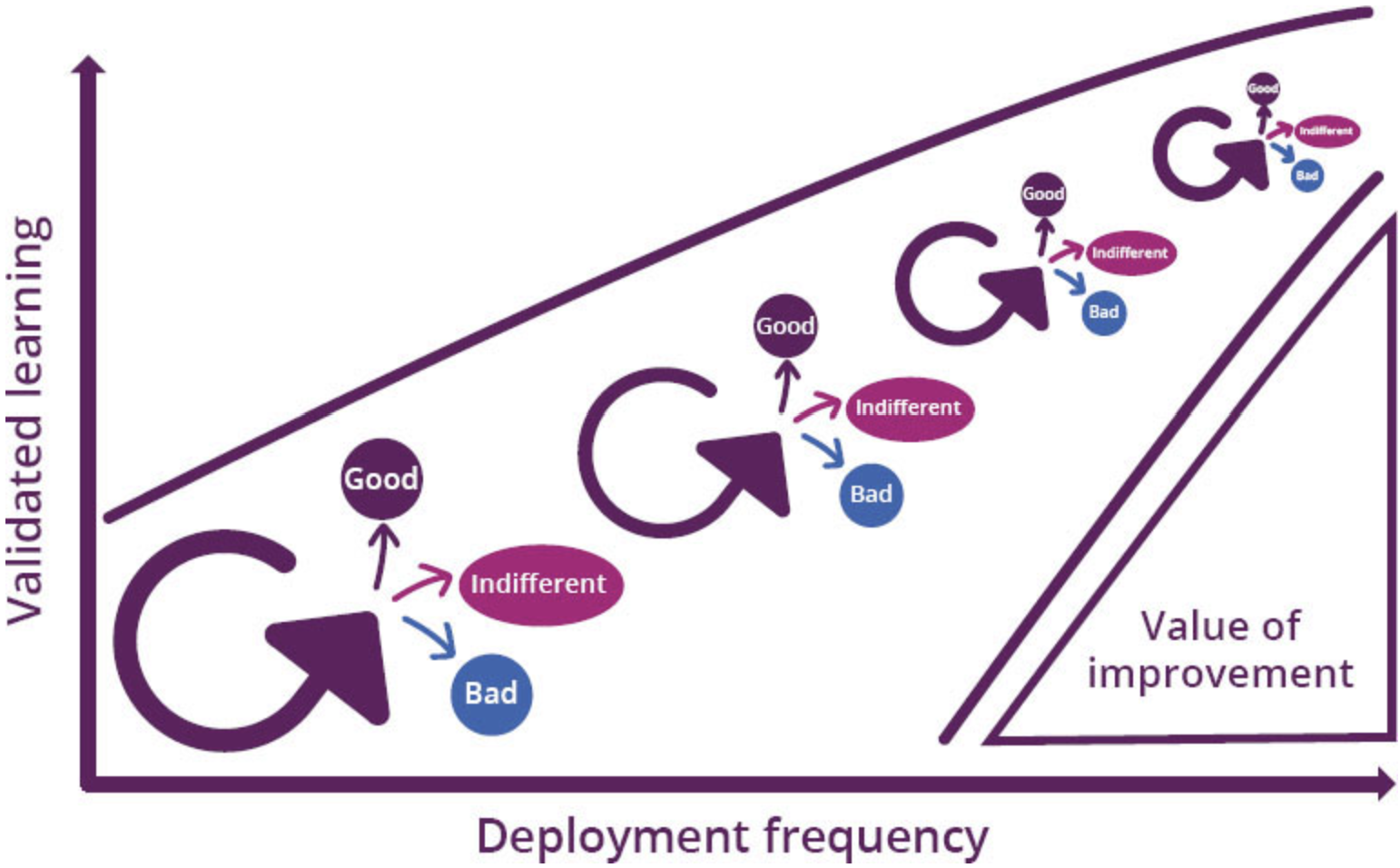ITIL 4 Acquiring Managing Cloud Services Certification Course: Realize - Continual Improvement
Continually improve cloud services Ongoing CSP alignment Viable cloud strategy ITIL continual improvement practice:
1. What´s the vision ? Define strategy in explore Regularly revise vision Organization´s needs mature as more cloud services used Complexity increases Important considerations: |
 |
| Considerations | Description |
Usage |
Competitor cloud usage ? Cloud trends ? Requirement patterns ? |
Roadmaps |
CSP activity ? Focus on specific areas ? |
Feedback |
Service consumer opinion ? |
Current vision |
Vision aligned with trends ? Requires evolutions ? Aligned with other IT strategies ? |
Assess delivery against vision
Assess cloud readiness in engage
Reassess regularly
2. Where are we now ?
Proficiency:
- Identify value gaps
- Assess cloud architecture
- Evaluate cloud portfolio
Alignment:
- Architecture aligns with CSP ?
- Service portfolio aligns with strategy ?
Backlog:
- Assess architecture backlog
- Trending issues:
- Incidents and problems
- Security and risks
Costs:
- Current cloud costs
- ROI
- Usage costs optimized ?
Service level:
- Service level trends
- Service performance
Customer experience:
- Current level
- Feedback trends
Deployments: cloud real estate vs cloud architecture standards
Roadmap:
- Delivering against plan ?
- Work in progress ?
Accessibility:
- Trained versus non-trained staff
- Service accessibility
Changes:
- Streamlined, integrated changes ?
- Optimal adoption speed ?
3. Where do we want to be ?
Compare operating model to vision
Identify gaps
Improvement opportunities
May require new operating model
Sub-optimal model requires holistic change
Seek outside expertise
Simple change:
- List opportunities and risks
- Record in improvement register
Key questions:
- Culture enables change ?
- Required skills ?
- Appropriate governance ?
- CSP relationships ?
- CSP tools ?
- CSP improvements and risks ?
4. How do we get there ?
Compare operating models
Determine gaps between current and future state
Define transition roadmap:
- New processes
- Upskilling
- Restructuring
- Hiring
- Technology integration
- New agreements
Outsource operating model areas
Managed service provider
Cost effective
Outsourcing questions:
- Central to business ?
- Cost benefits ?
- Skills access ?
- Realize vision ?
Don´t outsource strategic areas
High risk to value
Outsourcer responsible for activity
Consumer responsible for outcomes
No target operating model
Prioritize improvement backlog
Involve CSP
5. Take action
For outsourced operating models:
- Assess CSP in engage
- Monitor performance continually
Complete improvement backlog with Agile:
- Scrum
- Kanban
Continuous improvement flow
Batch iterations in sprint
Use Agile metrics:
- Lead times
- Sprint velocity
Measure ongoing effectiveness
6. Did we get there ?
Key questions:
- Agile teams ?
- Continuous improvement viable ?
- Collaborative culture ?
- Autonomous decisions ?
- Agile CSP ?
- Cloud standards alignment ?
Objectives and key results (OKRs)
Success measure
Link key metrics and key results
Engage CSP in choosing metrics
Clear OKRs allow objective evaluation
Improvement evaluation:
- Who reviews results ?
- OKRs correctly defined ?
- Metrics appropriate ?
- Definition of good enough ?
7. How do we keep the momentum going ?
Continual improvement ongoing
Cloud continually evolves
OKRs for an improvement initiative achieved form the new baseline for the next improvement (ensure improvement no regress)
Improve the continual improvement practice
Allows rapid future improvements
Review practice
Practice OKRs
Assess improvement:
- Proficiency
- Production rate
- Lead times
- Work in progress
Ensure standardization through:
- Automation
- Cloud reference architectures
Use infrastructure as a code (IaaC) and configuration as a code (CaaC)
Cloud policy
Ensures compliance
Non-compliance obstructs deployments
Control cloud estate with CSP
Prevent:
- Configuration drift
- Compliance regression
Establish thresholds
Monitor regression
VUCA environment:
- PDCA cycle accelerated
- Improvements incrementally

Continual improvement cycle:
- Good aspects retained as part of the next iteration
- Indifferent or neutral aspects analyzed whether to be improved for the next cycle or unnecessary
- Bad to be discarded or fixed in the next cycle
Faster move, more improvement and higher value

Go back to ITIL 4 Acquiring Managing Cloud Services Certification Course: Realize to finish this chapter or to the main page ITIL 4 Acquiring Managing Cloud Services Certification Course.
Interesting Management
-

Part 1: A good manager, better team motivation, better team productivity, better team results
When you are managing a team, “how to be a good manager” is the “must”...
-

Report optimization, increase your time management
As manager, I am doing many reports, even when I was an ITIL consultant, I still needed to do many reports...
-

Tools to get your ITIL intermediate certifications, the missing 15 points for the ITIL 4 Managing Professional
ITIL V3 is going to be obsolete...
-

The importance of the first customer meeting for the service
Managing an IT service when I start a new company is not an easy task, particularly true, if the service...



